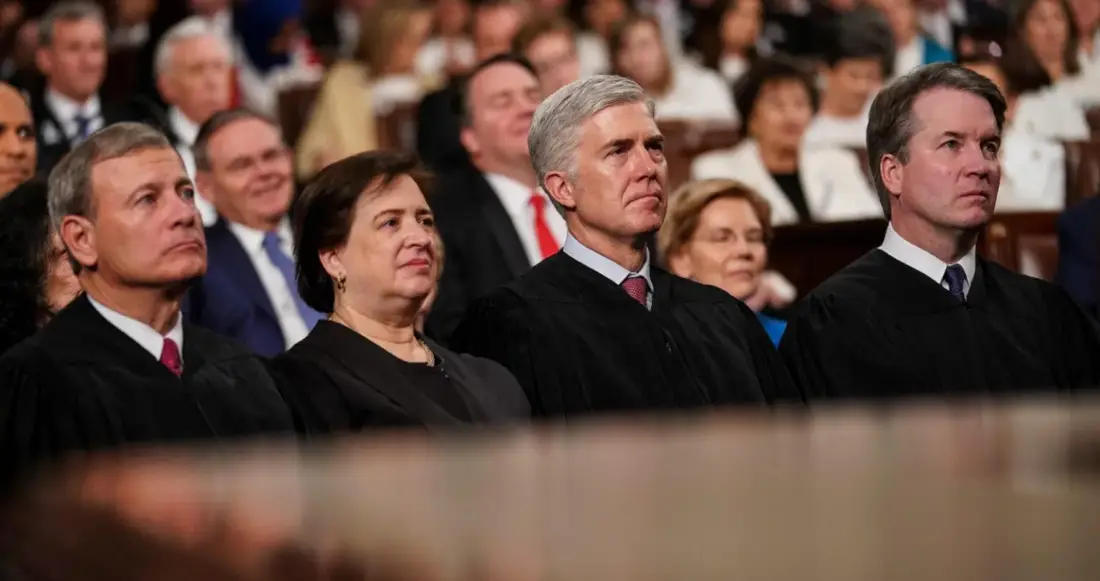For decades, the power of American presidents to fire officials in independent federal agencies has been tightly constrained by law—and by tradition. But now, with one sweeping decision, that balance of power may be shifting.
The U.S. Supreme Court has once again sided with President Donald Trump, issuing an emergency order that allows him to remove three Democratic-appointed commissioners from the Consumer Product Safety Commission (CPSC)—an independent agency long shielded from partisan firings.
Though the justices’ order is unsigned, its implications are clear: Trump’s campaign to reassert presidential control over the federal bureaucracy is gathering judicial momentum.
And this may be just the beginning.
⚖️ The Immediate Impact: Who Was Removed?
The Supreme Court’s ruling allows Trump to move forward with the dismissal of:
-
Mary Boyle
-
Alexander Hoehn-Saric
-
Richard Trumka Jr.
All three were appointed during the Biden administration and have served as CPSC commissioners—responsible for enforcing safety standards on everything from baby strollers and toys to microwaves and electric scooters.
Under existing law, commissioners at agencies like the CPSC cannot be fired at will. Instead, they can only be removed for “neglect of duty” or “malfeasance in office.”
But President Trump ignored those limits, offering no explanation for their terminations earlier this year.
A lower court blocked the removals, siding with the commissioners. But the Supreme Court just reversed that decision, signaling that even longstanding removal protections might no longer be enough to shield federal officials from a determined executive branch.
Why It Matters: Independent Agencies in the Crosshairs
At its core, this case is about more than just three commissioners. It’s about the very structure of American governance.
For nearly a century, Congress has created independent federal agencies—staffed by officials who can only be removed for cause—to oversee everything from financial markets (SEC) and labor rights (NLRB) to workplace safety (OSHA) and consumer protection (CPSC).
These agencies were designed to act as buffers against political interference, particularly by presidents. The goal was to allow experts, not politicians, to enforce complex regulations.
But Trump—and now, apparently, the Court’s conservative majority—see it differently.
In Trump’s view, these limits on presidential removal authority undermine the constitutional structure, where the president must retain full control over the executive branch.
“The American people elect the president, not unelected bureaucrats,” Trump has said. “And if I can’t fire them, then who’s really in charge?”
️ The Legal Backdrop: A 90-Year-Old Precedent Under Threat
The decision echoes an earlier Supreme Court emergency ruling from May, in which Trump was permitted to fire two other officials:
-
Gwynne Wilcox, of the National Labor Relations Board
-
Cathy Harris, of the Merit Systems Protection Board
Both of those agencies also enjoy statutory protections meant to insulate them from politics. But the Court again allowed Trump’s terminations to stand.
These cases chip away at a 1935 decision, Humphrey’s Executor v. United States, which upheld the constitutionality of for-cause removal protections for independent agency officials.
Legal scholars have long viewed Humphrey’s Executor as the bedrock of the administrative state. But with each new ruling, the Court appears more willing to overturn or sharply limit its reach.
Justice Brett Kavanaugh, in a concurring opinion, urged the Court to go even further—to take up the full case on its regular docket and potentially rewrite the law of presidential removal powers altogether.
“Further percolation in the lower courts is not particularly useful,” he wrote.
“This is a foundational question that demands a clear answer.”
⚔️ The Dissent: A Warning From the Court’s Liberals
The three Democratic-appointed justices—Elena Kagan, Sonia Sotomayor, and Ketanji Brown Jackson—publicly dissented.
Their concern wasn’t subtle.
In a blistering opinion, Justice Kagan warned that the Court’s decision undermines the careful balance Congress has struck between executive power and agency independence.
“By means of such actions,” she wrote,
“this Court may facilitate the permanent transfer of authority, piece by piece by piece, from one branch of Government to another. Respectfully, I dissent.”
Kagan’s use of the phrase “piece by piece by piece” is more than literary—it’s a signal of what many fear is happening: a gradual but deliberate dismantling of the administrative state, one ruling at a time.
Trump’s Larger Plan: Reengineering the Bureaucracy
Since returning to office, Trump has made no secret of his desire to overhaul the federal government.
This latest ruling adds fuel to a much larger initiative: “Schedule F”, a Trump executive order reintroduced in early 2025 that seeks to strip civil service protections from thousands of federal workers.
Under Schedule F, career officials deemed to have policy-making authority could be reclassified as political appointees, and thus fired at will.
Critics see it as an effort to purge government agencies and fill them with loyalists.
Supporters argue it’s about draining the swamp and restoring democratic accountability.
Now, with the Court on his side, Trump has more legal room than ever to carry out that vision.
The Human Impact: Who Gets Left Behind?
For the dismissed commissioners, the decision cuts deep.
They were not found guilty of misconduct. They were not accused of corruption. They were simply removed for being appointed by the “wrong” president.
Their attorneys, from the consumer advocacy group Public Citizen, pleaded with the Court not to act.
“The government now asks this Court to disrupt the status quo… The government cannot establish its entitlement to this extraordinary relief,” they wrote in court filings.
But their words fell on deaf ears.
What Happens Next?
The Supreme Court did not issue a final ruling on the constitutional question—it simply vacated the lower court’s block and sent the case back down.
This means:
-
Trump can proceed with the removals immediately.
-
The underlying constitutional issues will continue to be litigated in the lower courts.
-
The Supreme Court is likely to take up the full case in its 2025–26 term.
Should the Court take that step, the result could be the biggest shake-up of federal administrative law since the New Deal.
The Bigger Picture: A Government Rewritten?
Legal scholars across the spectrum are watching the Court’s moves closely. Some are calling this moment a “constitutional tipping point.”
If the justices formally overturn Humphrey’s Executor, they would essentially allow any president—Democrat or Republican—to fire anyone at almost any independent agency.
That would transform the federal government from a bureaucracy of semi-autonomous experts into a wholly politicized machine, subject to the whims of the president.
“That’s not draining the swamp,” one former agency official told Politico.
“That’s setting fire to the forest.”
Final Takeaway
The Supreme Court’s decision to allow President Trump to remove three independent federal commissioners may seem procedural, even arcane. But it sits atop a much larger shift — one that could reshape how power works in Washington for generations.
This is not just about one agency. Or one president. Or one term.
This is about the future structure of American government—and who gets to decide where the levers of power really lie.
And the Court has made its position increasingly clear: More power for the presidency. Less independence for the agencies.
What comes next will test not only the law, but the very soul of the administrative state.

Ethan Blake is a skilled Creative Content Specialist with a talent for crafting engaging and thought-provoking narratives. With a strong background in storytelling and digital content creation, Ethan brings a unique perspective to his role at TheArchivists, where he curates and produces captivating content for a global audience.
Ethan holds a degree in Communications from Zurich University, where he developed his expertise in storytelling, media strategy, and audience engagement. Known for his ability to blend creativity with analytical precision, he excels at creating content that not only entertains but also connects deeply with readers.
At TheArchivists, Ethan specializes in uncovering compelling stories that reflect a wide range of human experiences. His work is celebrated for its authenticity, creativity, and ability to spark meaningful conversations, earning him recognition among peers and readers alike.
Passionate about the art of storytelling, Ethan enjoys exploring themes of culture, history, and personal growth, aiming to inspire and inform with every piece he creates. Dedicated to making a lasting impact, Ethan continues to push boundaries in the ever-evolving world of digital content.
